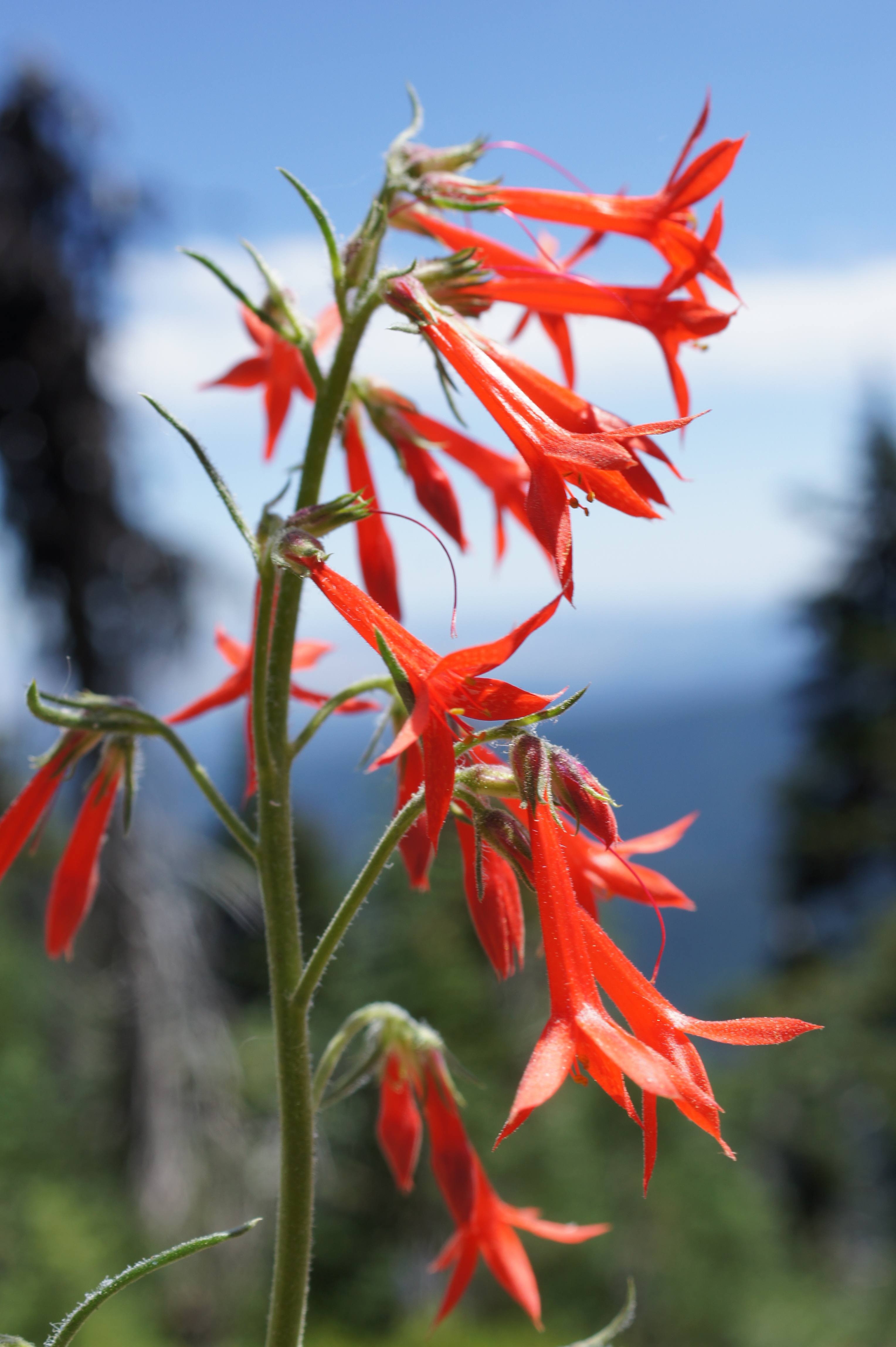Scarlet gilia
(Ipomopsis aggregata candida)

Description
Ipomopsis aggregata ssp. candida, commonly known as white-flowered skyrocket or white-flowered gilia, is a herbaceous perennial plant that belongs to the family Polemoniaceae. This plant is native to the Western United States and can be found growing in dry and rocky areas at elevations ranging from 3,000 to 10,000 feet. Description: White-flowered skyrocket is a small plant that typically grows to a height of 6 to 12 inches and has a spread of 4 to 8 inches. The plant has thin, branching stems that are covered with long, narrow leaves. The leaves are typically green, but can sometimes have a bluish-gray tint. The plant produces tall, slender flower spikes that can reach a height of 2 feet. The spikes are covered with small, white flowers that bloom in late spring to early summer. Habitat: White-flowered skyrocket is a plant that is adapted to growing in dry and rocky habitats. It can be found growing in a variety of soil types, but prefers well-drained soils that are low in organic matter. The plant is often found growing in open areas, such as meadows, grasslands, and rocky slopes. It can also be found growing in disturbed areas, such as roadsides and old fields. Range: White-flowered skyrocket is native to the Western United States and can be found growing in Arizona, Colorado, Idaho, Montana, New Mexico, Nevada, Oregon, Utah, Washington, and Wyoming. Cultivation: White-flowered skyrocket is a plant that can be grown in gardens, but it is not commonly cultivated. The plant prefers well-drained soils and full sun to partial shade. It is a drought-tolerant plant and does not require regular watering. The plant can be propagated by seed, but it can also be propagated by division. Ecological Importance: White-flowered skyrocket is an important plant in the ecosystems where it grows. The plant is a valuable source of nectar and pollen for bees, butterflies, and other pollinators. The plant is also an important food source for several species of wildlife, including deer, elk, and bighorn sheep. In addition, the plant is an important component of the soil ecosystem, as it helps to stabilize soils and prevent erosion. Conservation Status: White-flowered skyrocket is not considered a threatened or endangered species. However, like many native plant species, it is facing threats from habitat loss and degradation. The plant is also at risk from invasive plant species, which can outcompete native species for resources. Conclusion: Ipomopsis aggregata ssp. candida, or white-flowered skyrocket, is a beautiful and ecologically important plant that is native to the Western United States. The plant is adapted to growing in dry and rocky habitats, and is an important source of food and habitat for wildlife. While the plant is not considered threatened or endangered, it is still at risk from habitat loss and invasive plant species. Conservation efforts are needed to protect this important plant and ensure its survival for future generations.
Taxonomic tree:







